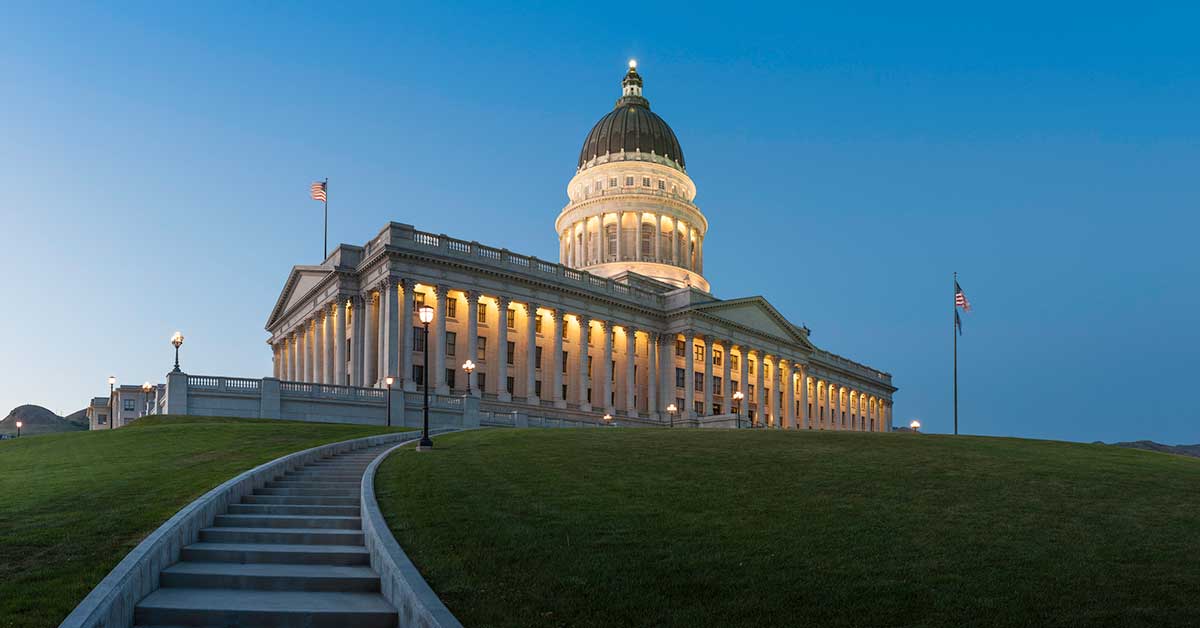
Reforming Tax Structure Could Mean Savings for All in Utah
With Utah growing faster than any other state in the country and with an outdated tax structure in place, there is a burgeoning belief that tax reform is necessary to help resolve the state’s fiscal issues.
A proposal to reform taxes in Utah will be presented to the state legislature when it convenes for a special session on Dec. 13. Sen. Lyle Hilliard and Rep. Francis Gibson are sponsoring the proposal which, among other provisions, would cut the state income tax rate by at least .25 percent and leave property taxes unchanged.
Hilliard and Gibson were part of the Tax Restructuring Task Force that was created at the end of the 2019 legislative session to come up with a plan to address a revenue imbalance that is crippling the state budget.
Utah’s population has nearly doubled in the past 40 years. Since 2010, nearly 400,000 more people now call Utah home, an increase of 14.4 percent, the largest of any state in America.
As such, growth in revenue in the general fund has not been able to keep up because the more residents in the state, the more demand there is for state-funded programs and policies.
Additionally, there has been a significant increase in people paying for services compared to goods. According to information provided by the Utah Association of REALTORS®, two-thirds of a person’s consumption is spent on a service while only one-third is spent on taxable goods. The byproduct of that disparity is that revenue collected from sales tax has begun to seriously lag behind the state’s growth.
This has led to a structural imbalance in Utah when it comes to taxes, but because revenue in this antiquated tax structure is siloed the state does not have the flexibility it needs to reallocate revenue to cover struggling corridors of the economy.
For example, the state income tax revenue can only be earmarked for public or higher education. The gas tax can only be allocated for transportation needs. Property taxes are considered local revenue and are only funneled to public education.
Meanwhile, the struggling general fund, which currently faces a $64 million deficit, has to provide funds not only for education and transportation but also public safety, Medicaid, air quality, tackling homelessness, finding more affordable housing, programs that support children, the elderly and special needs folks, and quality of life-oriented recreation programs and activities.
In 2019, Utah will collect $1.7 billion in property taxes, $2.4 billion in sales tax and a whopping $4.2 billion in personal and corporate income tax, the latter of which encompasses most, if not all of the growth the state has experienced. The aforementioned constraints on the allocation of this revenue has led to the large deficit in the general fund.
The Task Force came up with a proposal that modernize the tax structure while solving funding issues and provide an income tax cut to all Utah residents.
The primary aspect of the new tax reform proposal would be to allow the legislature the leeway and flexibility to choose how to fund programs and have the flexibility to address revenue imbalances.
The most attractive part of this plan for Utah residents would be the following tax cuts:
- Lowering the state income tax rate by at least .25%
- Expanding the “Utah Dependent Exemption” provision of the taxpayer tax credit
- Creating an income tax credit for certain Social Security retirement income
- Creating a “Grocery Tax Credit” for low-to-middle-income residents
The plan would save the average family of four in Utah that earns $60,000 a year more than $400 annually.
Overall, it would amount to a $75 million tax reduction state-wide.
There would have to be new taxes elsewhere, but they wouldn’t be automatic hits to one’s wallet as they are taxes on goods and services.
The plan would restore the full tax rate on unprepared food and repeal certain tax exemption on items such as motor oil and special fuels.
Sales taxes would also be added to certain services and the tax on rental cars and other vehicles would also increase. However, there would not be an implementation of a new sales tax on professional services.
Much-needed flexibility would be created by removing the constitutional restriction on state income tax and protecting education funding by moving all higher education costs back to the general fund.
The proposal would address many of the budgetary issues in the state while also reducing the tax burden on all middle-income families across the state.
The sales tax would no longer be left in the dust of the state’s growth and new sources of revenue would be added to the general fund, hacking away at its major deficit and providing more funds for state programs and policies.
Responsible tax reform is needed in Utah, and a plan will be presented to the legislature that seems to fit that description.
Time to Focus on Affordable Housing
Taxes on real estate are not the answer. Sign the petition calling on Congress to address our country’s housing shortage.





